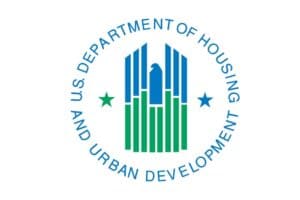On March 16, President Trump released his 62-page FY-2018 “America First” budget proposal, showing the potential scale of the appropriations risk the affordable housing industry may face in the coming year. The “skinny” budget (a complete budget is expected later this Spring) would cut HUD funding from $46.9 billion in FY-2017 to $40.7 billion – a 13.2 percent reduction. The budget blueprint “insists on $54 billion in reductions to non-Defense programs. We are going to do more with less, and make the Government lean and accountable to the people.” The document acknowledges that “it makes hard choices” but justifies such cuts by arguing, “State and local governments are better positioned to serve their communities based on local needs and priorities.”
The budget blueprint is light on specifics – the HUD portion is just over one page long – but some predictions can be made until a full budget is released later this spring. The blueprint proposes to eliminate funding for the Community Development Block Grant (CDBG) noting that the program has “not demonstrated results” and eliminates funding for “lower priority” or “duplicative” programs including HOME Investment Partnership Program, Choice Neighborhoods Initiative, Section 4 Community Development and Affordable Housing and the Self-help Homeownership Opportunity Program. Eliminating these programs would account for cutting $4.135 billion in FY-2017 Budget Authority.
It is still unclear where specifically the remaining $2 billion in proposed cuts will be incurred. The blueprint provides $35 billion for HUD’s rental assistance programs (as well as undisclosed “reforms that reduce costs while continuing to assist 4.5 million low-income households”) but does not mention specific rental programs. Based on an earlier draft of the budget leaked to the Washington Post, this $35 billion is a “roll up” of numerous programs including project-based and tenant-based Section 8, Section 202, Section 811, HOPWA, etc., as well as public housing capital and operating funds. If this is the case, it likely represents a $2 billion+ cut to be felt across these critical multifamily programs.
If enacted, these cuts would cause substantial harm to our industry. Many affordable housing transactions, particularly those serving the elderly, disabled and/or lowest income individuals, depend directly or indirectly on HUD grants and rental assistance programs.
There is much we do not know about the program specifics as well as “to be announced” policy changes to make HUD programs more efficient.
Now more than ever, NH&RA encourages its members to educate the Administration and members of the House and Senate about the vital role HUD and its program’s play in serving working class Americans, the elderly, the disabled, returning veterans and how these investments create jobs, revitalize communities and break the cycle of poverty. As you engage with your elected officials on the LIHTC this spring, don’t forget to share with them the vital role HUD plays in your communities.
